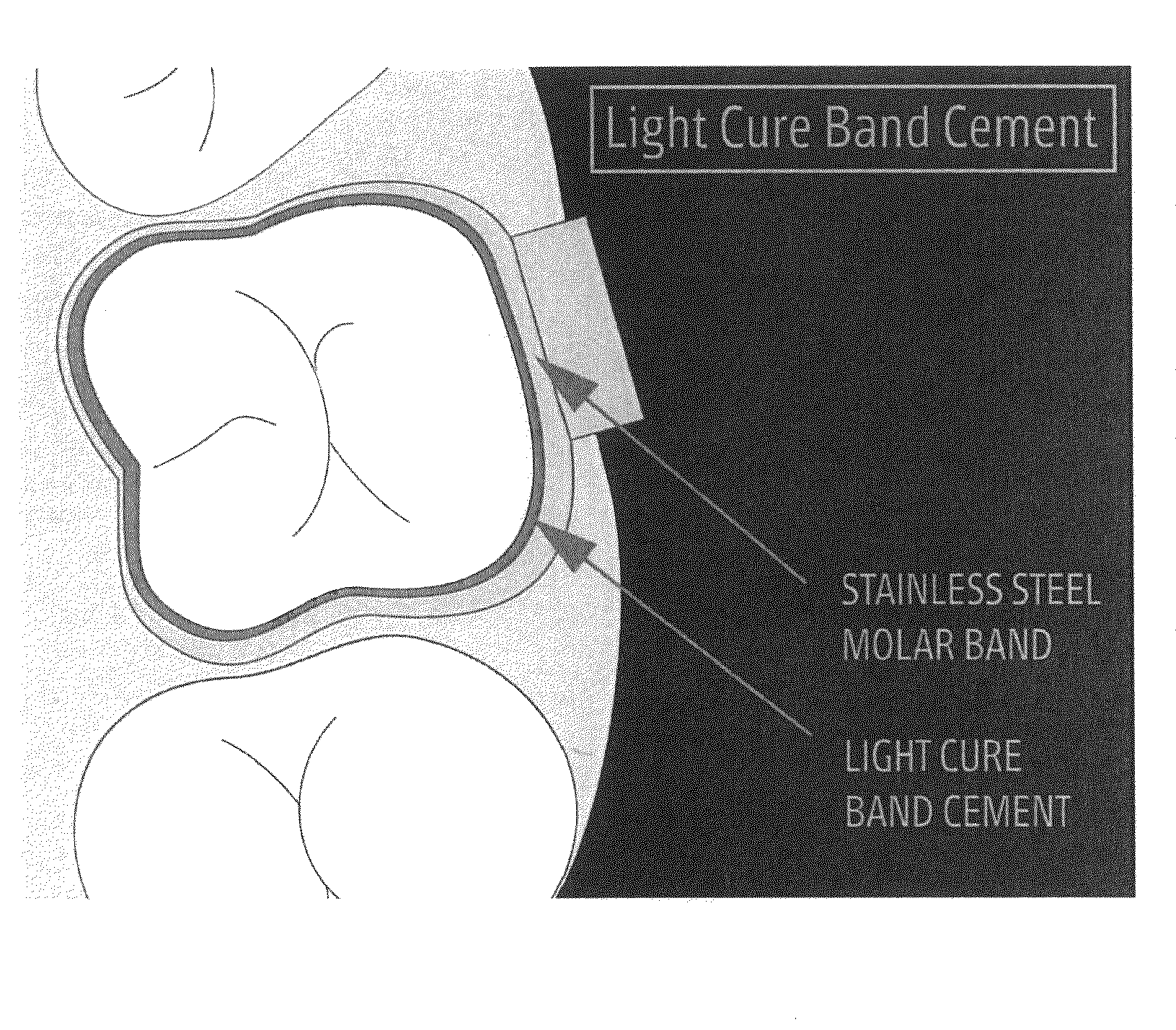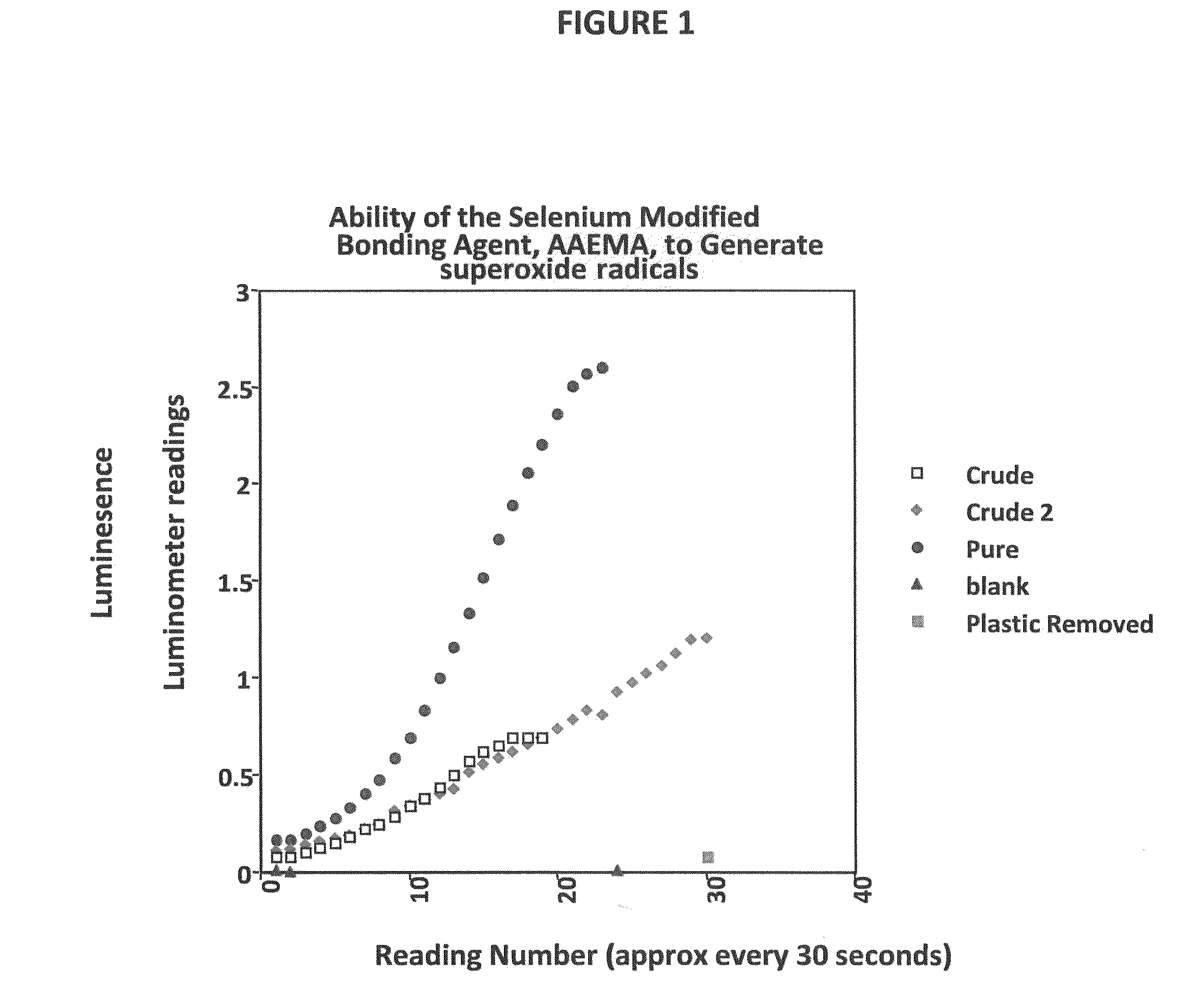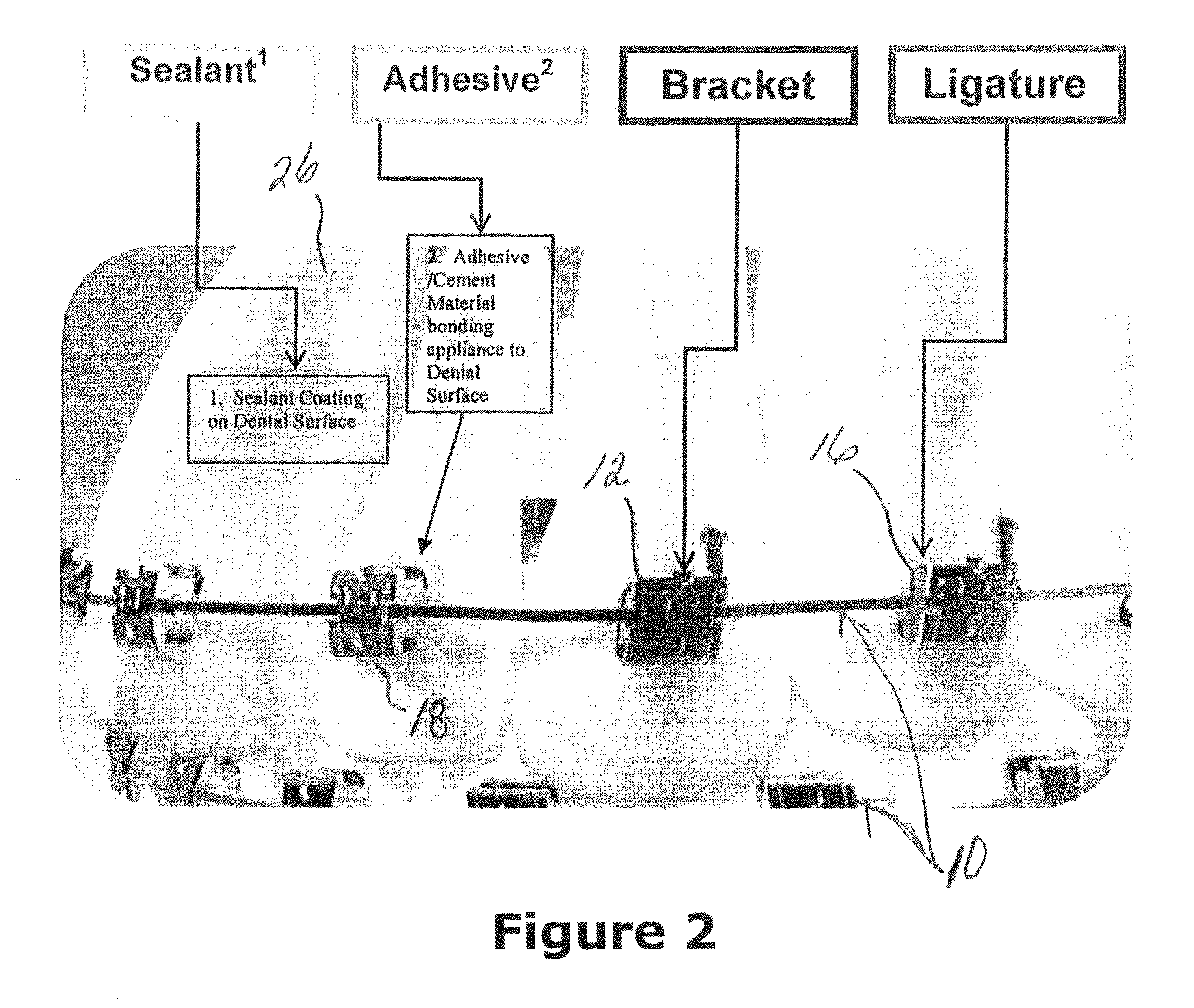Anti-microbial orthodontic compositions and appliances and methods of production and use thereof
a technology of compositions and appliances, applied in the field of dental care, can solve the problems of tooth enamel demineralization, dental caries, dental caries, and dental caries, and achieve the effects of preventing and treating oral diseases, and replacing appliances
- Summary
- Abstract
- Description
- Claims
- Application Information
AI Technical Summary
Problems solved by technology
Method used
Image
Examples
example 1
[0092]In this Example, hydrophobic inclusion of a protected selenium compound into a bonding agent has been demonstrated. In this hydrophobic mixing experiment, a selenium compound comprising a CN protecting group [2-(selenocyanatoacetoxy)butoxyethyl methacrylate] was mixed with the bonding agent 2-(Acetoacetoxy)ethylmethacrylate (AAEMA) to a final selenium concentration of 5%. The selenium composition was then applied to a surface, such as a PMMA plastic or a human toenail (results with both surfaces were the same), preferably at a concentration of about 100 mg / cm2. The ability of the selenium modified bonding agent to generate superoxide radicals was then measured by chemiluminescence, as shown in FIG. 1. In FIG. 1, “Crude 1” and “Crude 2” refer to a mixture of the selenium labeled material with AAEMA; “pure” refers to the pure selenium labeled compound (no AAEMA); “blank” refers to the AAEMA with no selenium; for “plastic removed”, the mixture-coated plastic was soaked in water, ...
example 2
[0093]This Example is related to anti-microbial adhesives, sealants and cements containing selenium compounds and utilized in accordance with the presently disclosed and claimed invention.
[0094]FIG. 2 illustrates orthodontic braces 10 that have been mounted on a patient's teeth using the anti-microbial adhesive system and method of applying the adhesive system more particularly described in more detail below. The braces include brackets 12, closing chains 14 (see FIGS. 8C-D), and ligatures 16 (see also FIGS. 8A-B). Each bracket 12 has been bonded to the dental surface of a tooth with the polymerized and cured adhesive illustratively shown as adhesive 18 in FIG. 2. In some embodiments the adhesive system is a one-step or self-cure adhesive. In other embodiments, the adhesive system is a light-cure adhesive system. In a further embodiment, the adhesive system includes an anti-microbial sealant to protect the tooth. In yet another embodiment of the system, anti-microbial light-cure ban...
example 3
[0119]Early caries lesions in enamel appear clinically as opaque white spot lesions. These lesions indicate demineralization of enamel caused by acids produced by cariogenic microorganism in plaque. The formation of white spot lesion around orthodontic brackets during treatment is a significant clinical and esthetic problem. Enamel demineralization has a recorded prevalence of up to 96% in patients undergoing fixed appliance therapy. White spots have been attributed to poor oral hygiene that occurs on account of difficulty in cleaning when fixed orthodontic appliances are present. Evidence of this difficulty is seen in the increased plaque build-up on brackets and increased numbers of the caries-causing oral bacteria Streptococcus mutans and Lactobacillus after placement of orthodontic appliances. These bacteria colonize the tooth surface as bacterial plaque and secrete organic acids through their metabolic activities. These acids cause demineralization of the tooth surface, which i...
PUM
| Property | Measurement | Unit |
|---|---|---|
| wavelength | aaaaa | aaaaa |
| physiological temperature | aaaaa | aaaaa |
| flow rate | aaaaa | aaaaa |
Abstract
Description
Claims
Application Information
 Login to View More
Login to View More - R&D
- Intellectual Property
- Life Sciences
- Materials
- Tech Scout
- Unparalleled Data Quality
- Higher Quality Content
- 60% Fewer Hallucinations
Browse by: Latest US Patents, China's latest patents, Technical Efficacy Thesaurus, Application Domain, Technology Topic, Popular Technical Reports.
© 2025 PatSnap. All rights reserved.Legal|Privacy policy|Modern Slavery Act Transparency Statement|Sitemap|About US| Contact US: help@patsnap.com



